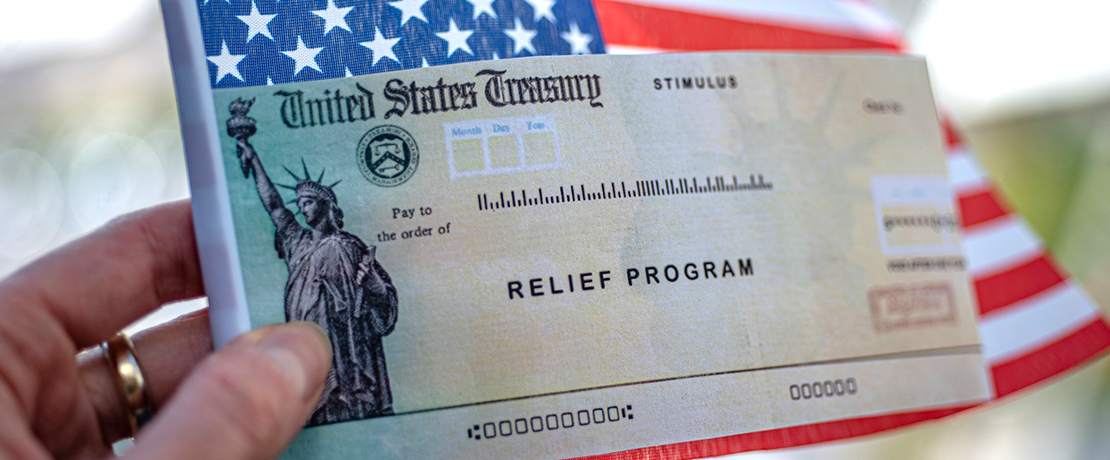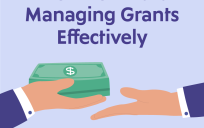In “Relief Funds and Equitable Service,” GovLoop explored how government leaders could use funding from the American Rescue Plan Act (ARPA) to support an informed and equitable recovery.
To the extent permissible, using this new funding source to make overdue investments in technology and cybersecurity was also a way for leaders to save costs down the road while simultaneously better serving constituents. GovLoop explored different ways governments wisely leveraged this opportunity to move into a post-pandemic (but not crisis free) future in “Key Opportunities After the COVID-19 Pandemic.”

ARPA and its support of state, local, and county governments through the Coronavirus State and Local Fiscal Recovery Funds (SLFRF) can be hard to quickly decipher. The initial passage of the American Rescue Plan Act provided $350 billion in dedicated funding to states, localities, territories and tribal governments, opening a window for governments to invest in technology that in many ways could help jurisdictions well into the future.
In January 2022, the United States Department of the Treasury released its final rule for SLFRF. Of note, the final rule includes details of the use of technology for effective service delivery, including program evaluation, data and outreach.
Following are simple answers to common questions to help public sector leaders continue to make the most out of this once-in-a-generation funding opportunity.
What is the timeline?
Funds will be delivered to local governments and some states in two portions, referred to as tranches. For local governments, the first payment of 50% of their designated funding total was delivered in May/June of 2021. The second payment was to be paid about 12 months from that date. States that saw a net increase in their unemployment rate of more than 2% received a single payment. Funds must be obligated by Dec. 31, 2024, and expended by Dec. 31, 2026.
How are funds being used?
It varies. Some entities are holding public hearings on the use of funds, while others are making decisions based on needs determined by administrators and elected officials. Research shows that:
- 67% of cities responding to a recent survey by the National League of Cities plan to use funding to replace lost revenue.
- “Most places have been slow to spend or even commit their funding.” (Brookings Institution)
- “Few places are pursuing transformational investment.” (Brookings Institution)
What are the SLRF categories for funding technology?
Treasury guidelines for spending funds provide recipients with “broad flexibility to decide how best to use this funding to meet the needs of their communities.” The most likely sources for paying for technology are:
- Replace Lost Public Sector Revenue: Providing Government Services
For technology projects, the most relevant and streamlined path for funding is likely to be funds Treasury has earmarked to replace lost revenue. Treasury’s broad guideline is that local governments may use replacement funds to “pay for ‘government services’ in an amount equal to the revenue loss experienced by the recipient due” to the pandemic.
Once a recipient identifies the reduction in revenue and available funding, Treasury is providing “broad latitude to use funds for the provision of government services.” Treasury specifically includes “modernization of cybersecurity, including hardware, software, and protection of critical infrastructure” in its discussion of government services.
- Respond to Health & Negative Economic Impacts: Effective Service Delivery
Enabling effective service delivery is another option for funding technology. It’s important to understand that “effective service delivery” funding needs to be used to “improve the efficacy of public health and economic programs through tools like program evaluation, data, and outreach, as well as to address administrative needs caused or exacerbated by the pandemic.”
The final rule offers “non-exhaustive” examples of tech that could be purchased under this category, including:- Data analysis resources to gather, assess, share and use data
- Technology infrastructure to improve access to and the user experience of government IT systems, as well as technology improvements to increase public access and delivery of government programs and services
- Community outreach and engagement activities
- Technology infrastructure to adapt government operations to the pandemic
Treasury does not pre-approve expenditures. Entities should follow evolving Treasury guidance.
Meredith Trimble is a former municipal official and Town Council Acting Chair, who focused on strategic planning, annual budgeting and bonded infrastructure projects. Her government experience also includes posts in both federal and state-level executive branch agencies; Associate Editor of the Federal Election Commission’s FEC Record; and Director of Education for the CT Office of State Ethics. In her current role as a Content Manager, Editorial with Tyler Technologies, Inc., she writes content to help empower those who serve the public. Her current focus is to help facilitate data-enabled organizations and create connections between governments and those they serve.
Interested in becoming a Featured Contributor? Email topics you’re interested in covering for GovLoop to featuredcontributors@govloop.com.





Leave a Reply
You must be logged in to post a comment.